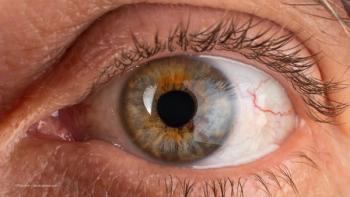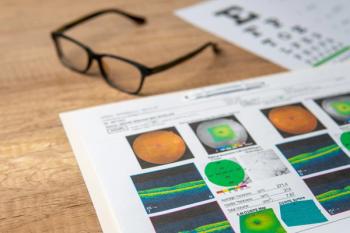
- February digital edition 2022
- Volume 14
- Issue 2
Top digital resources for prescribing
Understanding legal, regulatory issues is crucial as telehealth use widens
Gone are the days when optometrists carried prescription pads in their white coats. Now, most doctors have scrubs with pockets allowing easy access to smartphones, as well as briefcases and smart luggage putting tablets and laptops for e-prescribing within quick reach.
On routine days optometrists want the ability to check prescribing information, including dosages, generics, cost, and drug interaction. Furthermore, mobile access to electronic health records lab testing orders, and formularies is critical during this ongoing global pandemic.
Understanding the legal and regulatory issues relevant to interstate and international prescribing is crucial as telehealth increasingly becomes part of the modern practice of optometry. This article will discuss factors everyoptometrist needs to understand for e-prescribing.1 We will also reveal our top 10 digital resources for optometric prescribing.
Regulations
The Federal Trade Commission (FTC) enforces the Eyeglass Rule,2 requiring that optometrists and ophthalmologists give patients a copy of their prescription, without extra cost, after completing an eye examination.
The FTC also enforces the Contact Lens Rule,3 which states, among other things, that patients may shop around when buying contact lenses and upholds their rights in obtaining prescriptions.
Those rights are summarized as follows:
An individual has a right to their prescription.
Patients do not have to buy prescription eyeglasses from an optometrist or ophthalmologist.
Patient prescriptions should include certain information, determined by state law.
The Health Insurance Portability and Accountability Act does not prevent a prescriber from releasing a prescription.
Eyewear prescriptions should be valid for at least 1 year; however, there may be circumstances in which less than a year is justified.
Additional information shared by the FTC further explains the rights of patients as follows:4
Eye care professionals cannot make patients pay an extra fee for prescriptions.
Eye care professionals cannot tell their patients they must buy eyeglasses or contacts. Eye care professionals cannot tell patients to sign a waiver or release.
The individual has a right to receive additional copies of the contact lens prescription and the eye care professional has 40 hours in which to provide it.
In some states, eye care professionals can charge for a pupillary distance measurement.
The Contact Lens Rule says prescriptions must include the following information:4
Patient’s name
Date of examination
When the prescription was issued and when it expires
The professional’s contact information, including address and phone number
The power, material, and/or the manufacturer of the contact lens
The base curve of the contact lens
The diameter of the contact lens, when appropriate
If a patient wants a brand other than that prescribed by the eye care professional, the professional must approve it. If, however, a manufacturer offers a brand-name option and a generic option, patients do not need an eye care professional’s approval.5 In all circumstances, state law determines when prescriptions for eyeglasses or contact lenses will expire. Most states, if not all, have rules and regulations under their business and professions codes regarding prescription lenses.
For example, California’s Business and Professions Code explains what information is required for prescription lenses. Additionally, the State Department of Public Health, Board of Optometry, and Medical Board shall prepare and adopt those quality standards and adopt regulations relating to prescription ophthalmic devices, lenses, etc.
Any violations of the rules and regulations are under the jurisdiction of the state boards.6 In closing, there are several federal and state regulations that optometrists must follow when prescribing eyeglasses and contact lenses.7
Cost-saving resources
In busy optometric offices, it is important to provide cost-saving resources for patients being prescribed ophthalmic medications like antiglaucoma, anti-infective, anti-inflammatory, and dry eye medications. Patients appreciate guidance while maneuvering the changing world of pharmacy products. Patients also love coupons that save them money.
Capsule and GoodRx are 2 examples of digital cost-saving resources in modern optometric offi ces. Beginning in 2022, one of the nation’s largest pharmacies, CVS, plans to close 900 stores (roughly 10%),8 moving toward different models called “HealthHubs” that offer primary care services. Modern optometric offices will benefi t by offering digital and web-based services, and so will their patients and communities.
References
1. Kaplan DA, Wehrwein P. Digital tools, new standards will change healthcare and pharmacy access. Managed Healthcare Executive. September 13, 2021. Accessed December 9, 2021. https://www. managedhealthcareexecutive.com/view/digital-tools-new-standards-willchange-healthcare-and-pharmacy-access
2. Fair L. A prescription for complying with the Eyeglass Rule. Federal Trade Commission. December 8, 2020. Accessed January 11, 2022. https:// www.ftc.gov/news-events/blogs/business-blog/2020/12/prescriptioncomplying- eyeglass-rule.
3. Federal Trade Commission. The Contact Lens Rule: A Guide for Prescribers and Sellers. Accessed January 11, 2022. https://www.ftc. gov/tips-advice/business-center/guidance/contact-lens-rule-guideprescribers- sellers
4. Federal Trade Commission. Complying with the Eye Glass Rule. Accessed January 11, 2022. https://www.ftc.gov/tips-advice/business-center/ guidance/complying-eyeglass-rule
5. Federal Trade Commission: FAQS: Complying with the Contact Lens Rule. Accessed January 11, 2022. https://www.ftc.gov/tips-advice/businesscenter/ guidance/faqs-complying-contact-lens-rule
6. California Legislative Information. Health and Safety Code. Accessed January 11, 2022. https://leginfo.legislature.ca.gov/faces/ codesTOCSelected.xhtml?tocCode=HSC&tocTitle=+Health+and+Safety +Code+-+HSC
7. Federal Trade Commission. Buying Prescription Glasses or Contact Lenses: Your Rights. Accessed January 11, 2022. https://www.consumer.ftc. gov/articles/buying-prescription-glasses-or-contact-lenses-your-rights
8. Valinsky J. CVS closing 900 stores. CNN Business. November 18, 2021. Accessed January 11, 2022. https://www.cnn.com/2021/11/18/investing/ cvs-store-closures/index.html
Articles in this issue
almost 4 years ago
Identifying ocular surface medicamentosa apart from ocular allergiesalmost 4 years ago
When lifestyle and nutrition failalmost 4 years ago
Study: EHR notes may enhance, prolong racial biasalmost 4 years ago
Pregnancy and postpartum ophthalmic changes can present a challengealmost 4 years ago
Heru advances visual field assessmentsalmost 4 years ago
These digital tools for optometric prescribing are eye openingalmost 4 years ago
Dry eye disease onset at a younger agealmost 4 years ago
Better flow for better patient carealmost 4 years ago
Retinal considerations crucial for accurate biometryalmost 4 years ago
MIGS dramatically transforms glaucoma managementNewsletter
Want more insights like this? Subscribe to Optometry Times and get clinical pearls and practice tips delivered straight to your inbox.








































